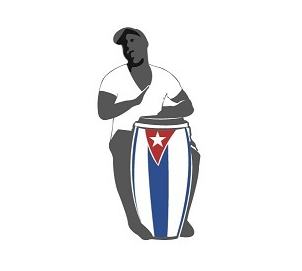El Museo Memorial del Morrillo: From Spanish Stronghold to the Frontline of Freedom
It’s like the little brother to Castillo de San Severino.
That’s what the tour guide said in her introduction to this little fort, now simply referred to as ‘El Morrillo’ by the locals.
Originally named Batería de San Felipe del Morrillo, after King Philip V who ruled Spain between 1700 and 1724, this former fort and artillery battery is now an archaeological and historical museum. It’s strategically located on the southeast shore of the Bay of Matanzas at the mouth of the Canimar River, in a neighbourhood also referred to as San Felipe.
El Morrillo was first constructed in the mid-1700’s, starting with a watchtower around 1720, followed by the main building after 1760. It was an integral part of what’s called the ‘defensive belt’ of Matanzas. This ‘belt’ was comprised of four fortifications, including Castillo de San Severino and two others which don’t exist now, built to protect the Bay and the settlement against pirates and hostile invaders. Time, battle and the forces of nature took their toll on the original structure, and by 1807 it required almost a complete overhaul which involved the removal of the original watch-tower and a renovation into its present configuration. It was used as a naval station after the Cuban War of Independence in 1902, up until it was abandoned in 1934.
The most notable event took place here in 1935, when the fort was the site of a historic battle between Cuban soldiers and young revolutionary forces, resulting in the assassinations of two of Cuba’s most resolute freedom-fighters -- Antonio Guiteras Holmes (1906-1935) and Carlos Aponte (1901-1935).
Guiteras, of Cuban-American descent, planned and spearheaded the movement aimed at fighting against tyranny and the pro-imperialist regime in Cuba. Carlos Aponte, a Venezuelan, was recruited to be a member of this group of would-be insurgents lead by Guiteras. The plan was to leave Cuba by boat from the fort under the cover of darkness, and head to Mexico to prepare for the struggle against the government, returning later with soldiers trained, armed and ready for battle.
The boat was delayed, leaving time for the Cuban military to be alerted to the plan and to surround and attack them. The skirmish took place at a nearby hill on the ravine, and both Guiteras and Aponte were shot and killed. Now considered martyrs, a monument has been erected on that exact spot, and their remains are entombed at the fort itself. The old canoe which was used to transport their remains is on display there as well. The museum was declared a national monument in 1979.
I’ve been to el Morrillo twice, and I remember wishing that the state of the exhibits themselves – the lighting and the layout in particular – were a little more conducive to the importance of the artifacts and the stories behind them. The ongoing challenge with Cuba’s museums, especially those outside of major tourist centres, is the shortage of resources required to keep up with the ongoing restoration and conservation of their properties and collections. However, slow-but-steady improvements have continued over the last few years, and I’ve learned that there are more significant efforts being carried out now, in preparation for a return to tourism once the country opens to foreigners again.
Regardless, the best part of the tour on both occasions were the ladies who worked at the site. Acting as guides, they were clearly proud of their heritage, committed to their work and completely engaged in telling the story behind this piece of Cuba’s revolutionary past. As usual, it’s the human element that has the power to either make or break an experience.
It’s easily accessed just off the highway between Matanzas and Varadero, at the end of a street just off the west side of the Canimar Bridge. There is a fantastic view of the Bay from the rocky coastline where it sits, and there’s a tiny beach adjacent to the fort which is perpetually deserted. It’s not Varadero Beach - the water looks a little rocky - but it’s a sweet and quiet spot for a picnic after your tour.
El Morrillo may not be as popular a tourist site as Castillo de San Severino (I couldn’t even find it on Trip Advisor), but with its significant historical value it definitely warrants a visit.






